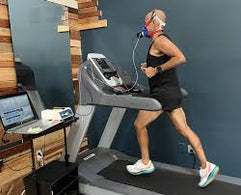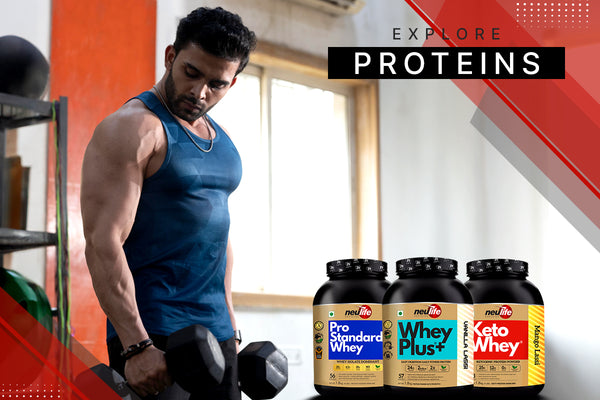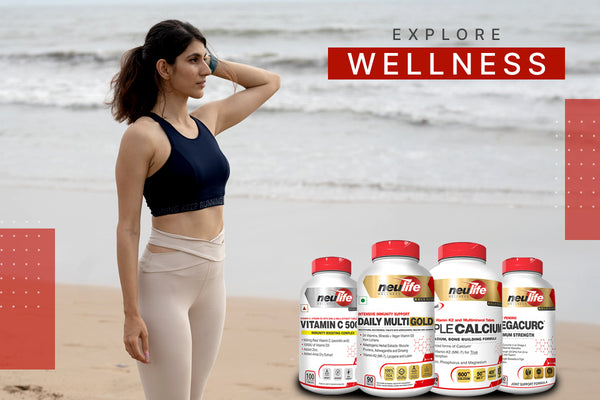
What is VO2 Max? Let’s Break It Down!
If you’re into fitness or just looking to level up your endurance game, you’ve probably heard of VO2 max. But what’s the deal with it, and why is it so important? Let's get into the science and make it simple.
VO2 Max: What’s That?
VO2 max is your body’s maximum capacity to use oxygen during exercise. It shows how well your heart, lungs, and muscles work together during intense physical activity. The better your VO2 max, the better your ability to maintain high-intensity efforts for longer periods, which directly impacts your endurance.
Why Does VO2 Max Matter?
Having a higher VO2 max means:

- More endurance: You can perform intense workouts for longer periods.
- Faster recovery: Your body recovers more quickly after high-intensity exercise.
- Better cardiovascular health: A higher VO2 max is linked to a healthier heart and lungs.
How’s It Measured?
Traditionally, VO2 max is measured in a lab setting, where you perform incremental exercise on a treadmill or bike while the amount of oxygen you consume is measured. This results in a precise number reflecting your oxygen uptake. However, you don’t necessarily need to get tested in a lab to get an estimate.
Fitness trackers can provide a good estimate of your VO2 max by tracking heart rate and exercise intensity, but keep in mind, lab tests are still the gold standard for accuracy.
The Science Behind VO2 Max Training
Training to improve your VO2 max involves a variety of physiological changes that increase your body’s efficiency in using oxygen. The primary areas of adaptation include:
- Cardiovascular Adaptations: The heart pumps more blood per beat (higher stroke volume), and capillary density increases, allowing more oxygen to reach muscles.

- Respiratory Efficiency: Your lungs become more effective at exchanging oxygen and carbon dioxide, improving overall lung capacity.
- Muscular Adaptations: Muscles become more efficient at using oxygen for energy production, with an increase in mitochondrial density and improved enzymatic activity, allowing you to produce more energy faster.
Training Zones for VO2 Max Gains

Training in specific intensity zones helps to improve your VO2 max. These include:
1. Aerobic Base Training
This is the foundation of your VO2 max training, focusing on building endurance and your ability to sustain moderate-intensity activity. Workouts typically fall in Zone 2, which is 60-70% of your maximum heart rate. It’s about building stamina and preparing your body for harder efforts.
2. Threshold Training
Threshold training targets your lactate threshold, which is the point where lactic acid builds up in your muscles. By training just below or at this threshold, you increase your body’s ability to clear lactic acid and sustain higher intensities for longer periods. This complements VO2 max training because it allows you to go harder without fatiguing as quickly.
3. High-Intensity Interval Training (HIIT)

HIIT involves alternating between periods of high-intensity effort (90-95% of max effort) and low-intensity recovery. This method is highly effective at boosting VO2 max by improving oxygen utilization, increasing cardiac output, and enhancing the recruitment of fast-twitch muscle fibers. A sample HIIT workout would involve a warm-up, followed by 30 seconds of all-out effort with 90 seconds of rest, repeated 6-8 times, and a cool-down.
4. Long Slow Distance (LSD) Training
While it’s not as intense as the other methods, LSD training is essential for building a solid aerobic base. It involves exercising at a steady, low intensity for extended periods (usually in Zone 1-2). This supports recovery and prepares your body for more challenging training.
Understanding Running Intensity and Endurance
When considering running distances, it's important to understand how intensity and endurance interact. A 10K run typically lasts between 45 minutes to an hour, while a half marathon (21K) takes around 1.5 to 3 hours, and a full marathon (42K) can range from 3.5 to 6 hours, depending on the runner's pace and experience.
Sprinting 100m in under 10 seconds demands an all-out, ultra-high-intensity effort, showcasing the extreme power output required for short bursts of speed.
 Intensity refers to the amount of energy expended to sustain a given power level, which varies significantly based on exercise type. Endurance events, such as the Tour de France, which spans 21 days, highlight the cumulative effects of lactic acid build-up over prolonged exertion.
Intensity refers to the amount of energy expended to sustain a given power level, which varies significantly based on exercise type. Endurance events, such as the Tour de France, which spans 21 days, highlight the cumulative effects of lactic acid build-up over prolonged exertion.
The rate of exertion is a crucial limiting factor in performance. Minimal anaerobic respiration results in lower lactic acid accumulation, allowing sustained effort over longer periods. As lactic acid builds up, the body clears it through metabolic pathways, impacting endurance and overall athletic output.
By understanding intensity levels and incorporating strategic training, athletes can optimize their performance, enhance endurance, and efficiently manage energy across varying distances.
Lactic Acid—The Secret Player
Lactic acid is a byproduct of anaerobic metabolism, which occurs when your body doesn’t have enough oxygen during intense exercise.

It can cause the burning sensation in your muscles and lead to fatigue. Training to clear lactic acid more efficiently through threshold training can help you sustain higher intensities for longer periods, which complements VO2 max training.
Factors that Affect Your VO2 Max
- Genetics: Your genetic makeup significantly impacts your VO2 max potential. While some people may have a higher baseline, consistent training can lead to substantial improvements for everyone.
- Age: VO2 max naturally declines with age, but regular training can slow this decline and help you maintain higher levels of fitness.
- Training Status: Beginners can see rapid improvements in VO2 max, while more advanced athletes may experience slower but still valuable gains.
- Altitude: Training at higher altitudes, where oxygen is scarcer, can boost your VO2 max by stimulating the production of red blood cells to compensate for the lower oxygen levels.
- Body Composition: A lower body fat percentage and higher lean muscle mass contribute to a higher VO2 max, as lean tissue requires more oxygen for energy.
Busting VO2 Max Myths
-
Myth 1: VO2 Max Is Only Relevant for Elite Athletes
Not true! VO2 max is an important metric for anyone who wants to improve their fitness, whether you’re just getting started or aiming to reach your personal best. -
Myth 2: You Can’t Improve Your VO2 Max
Although genetics set a limit, most people can improve their VO2 max by 10-30% with consistent training, even if they start at a lower level. -
Myth 3: VO2 Max Training Requires High-Tech Equipment
You don’t need expensive gadgets or lab tests to improve your VO2 max. Basic training methods like running intervals or cycling at high intensities can effectively boost your oxygen uptake.
VO2 Max Training for Every Athlete
Whether you’re a runner, cyclist, or casual gym-goer, VO2 max training has a place in your fitness routine.
- For Runners: VO2 max training improves speed and stamina, helping you achieve personal bests and perform better in long-distance races.
- For Cyclists: A higher VO2 max helps cyclists maintain speed on climbs and throughout long rides.
- For Recreational Athletes: VO2 max training supports overall fitness, cardiovascular health, and weight management.
Tracking Your VO2 Max
Monitoring your VO2 max over time can provide valuable insights into your fitness progress. You can track it in the following ways:

- Fitness Trackers: Devices like Garmin, Polar, and Apple Watch estimate your VO2 max based on heart rate and activity data.
- Field Tests: Tests like the Cooper Test (12-minute run) or the beep test can provide an approximation of your VO2 max.
- Lab Testing: For the most accurate results, periodic lab assessments offer precise VO2 max measurements.
Tips for Beginners
- Start Slow: Don’t dive into high-intensity training right away. Gradually build up your VO2 max training to avoid overtraining and injury.
- Focus on Recovery: Rest and proper nutrition are critical for progress. Without recovery, your body won’t adapt and improve.
- Mix It Up: Variety in your training will keep things interesting and effective. Combine different methods like HIIT, threshold training, and LSD.
- Set Realistic Goals: Track small improvements over time. Progress is often gradual, and consistency is key.
Conclusion
VO2 max training is one of the most effective ways to improve your fitness, whether you’re a beginner or a seasoned athlete. Understanding the science behind it, using proper training methods, and tracking your progress can help you unlock your full potential.
By focusing on building endurance, improving cardiovascular and respiratory efficiency, and maximizing oxygen utilization, you’ll elevate your performance and reach new heights in your fitness journey.






